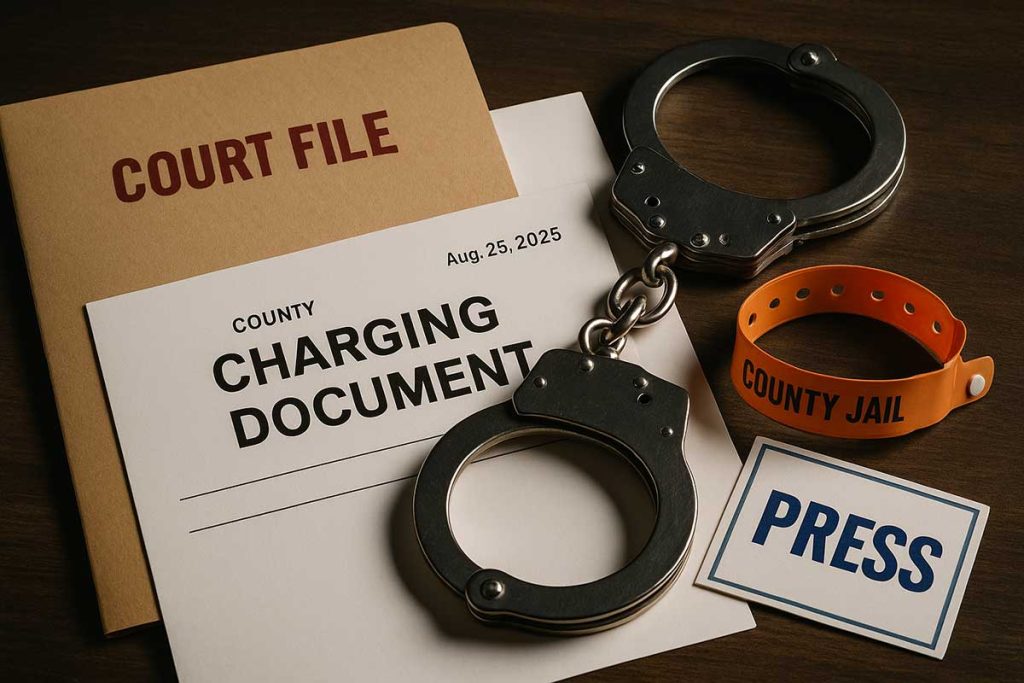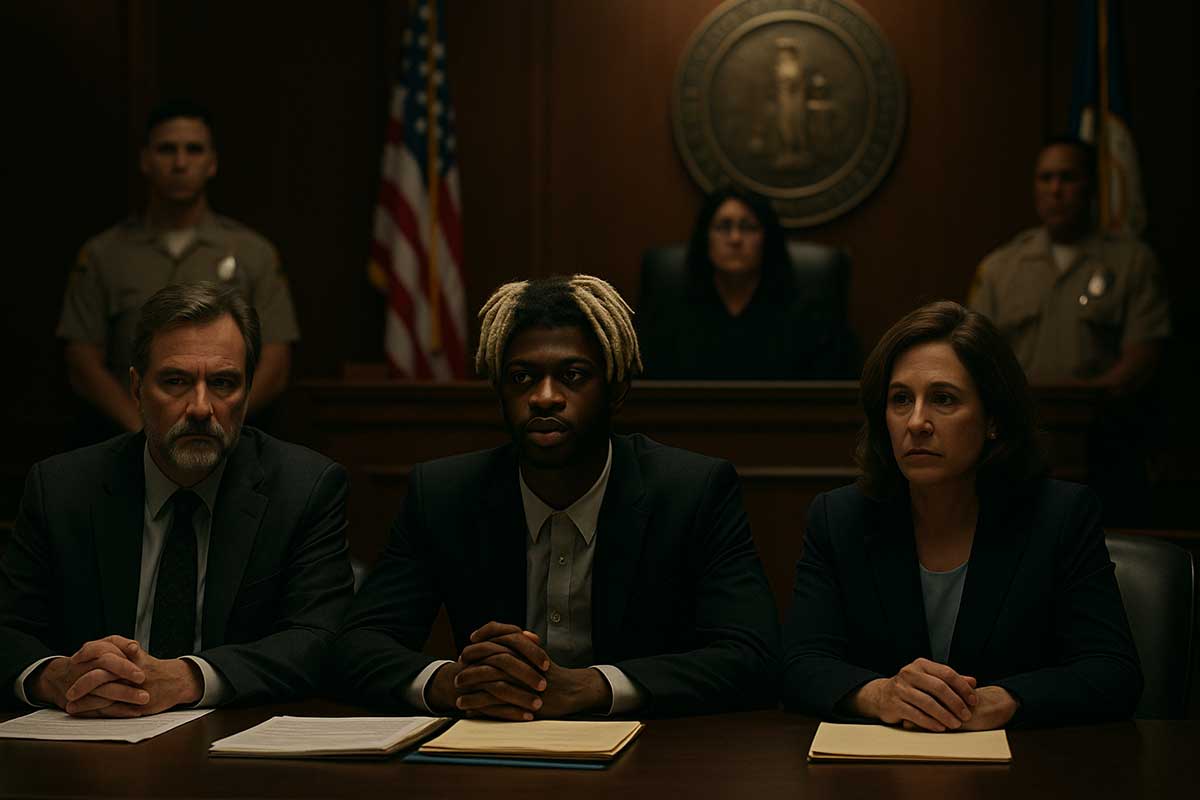Three counts of battery on police and one resisting charge follow Aug. 21 Ventura Blvd. incident
A 6 a.m. street call spirals into a felony case
TubiTV Just Hit 200 Million Users – Here’s Why
10 Perfect-Score Shows Buried on Prime Video Right Now
Before sunrise on Aug. 21, 2025, Los Angeles police responded to reports of a nude person wandering Ventura Boulevard in Studio City. Officers say they encountered Lil Nas X (Montero Lamar Hill), who was initially described as wearing only underwear and cowboy boots, and that he charged at them when confronted. He was transported to a hospital on suspicion of a possible overdose, then booked into custody. Four days later, on Aug. 25, prosecutors filed four felony counts—three alleging battery with injury on a police officer and one alleging resisting an executive officer. In court, the 26-year-old artist pleaded not guilty. The case instantly became a national flashpoint, blending celebrity, questions about mental health and intoxication, and public-safety concerns—exactly the sort of collision that tests how the criminal system treats high-profile defendants under heavy media glare.
Testimony goes public—and the internet reacts
Within hours of the arraignment, courtroom details and charging language ricocheted across major outlets and social feeds. Reporters highlighted the not-guilty plea, the nature of the counts, and the allegation that officers suffered injuries. His legal team has pushed back on suggestions of drug use, framing the encounter as an aberration—while fans, critics, and civil-liberties voices argued over what the video snippets and police statements actually prove. An embedded CBS News post on X summarizes the plea and charge breakdown, capturing the split-screen reaction between those urging accountability and those calling for empathy and due process. The swirl of quick-take commentary underscores a familiar pattern: in celebrity cases, social media often sets the tone before any sworn testimony is tested in court, shaping public opinion long before a jury is seated.
The numbers: counts, bail, and possible exposure

The $3.99 Streaming Service With 500+ Oscar Winners Nobody Knows About
Cancel These 3 Subscriptions Before November 1st – Here’s Why
The charging document’s math is stark: three counts of battery with injury on a police officer and one count of resisting an executive officer. At arraignment, bail was set at $75,000, and release conditions included participation in substance-use support (e.g., Narcotics Anonymous meetings or outpatient treatment) once freed. While exact sentencing exposure depends on the facts and any priors, reporting from the hearing makes clear that a conviction on all counts could carry significant prison time—potentially more than a decade—especially if injuries to officers are established and if counts run consecutively. In the near term, the calendar matters: each continuance adds legal costs, headlines, and uncertainty. For a touring and branding-dependent artist, even short delays can ripple across release timelines, sponsorship talks, and live commitments, amplifying the financial stakes far beyond the courtroom.
Why fans and officers see the same night differently
For supporters, the arrest reads as a mental-health crisis unfolding in public: disoriented behavior, hospital transport, and a naked or nearly naked walk on a busy boulevard suggest an episode needing care before cuffs. For law enforcement advocates, the case is simpler: charging at officers is a bright line, and injuries elevate the seriousness regardless of fame. Both frames are coexisting—and colliding—online. To witness how the narrative is being packaged for mainstream audiences, see the embedded ABC News video recap, which condenses the timeline from street encounter to felony filing in under a minute. The split reaction mirrors a broader cultural debate: when erratic behavior precedes alleged assault on officers, where should the system place its first emphasis—public safety, treatment, or both? That unresolved question is now attached to one of pop’s most visible names.
Inside the filings: what the paperwork signals next
Early reporting from the courthouse confirms the not-guilty plea and the exact statutes charged. Expect prosecutors to lean on body-worn camera footage, medical records documenting officer injuries, and dispatch logs to establish the sequence. The defense, meanwhile, is likely to test probable cause, the proportionality of force, and any evidence that intoxication or health issues impaired intent. If preliminary hearings proceed on schedule, both sides may preview their theory of the case through witness lists and early motions—for example, requests to limit dissemination of sensitive video or to consolidate counts. Conditions tied to release (like mandated meetings) will become an immediate compliance barometer. Any violation would risk bail revocation—making flawless adherence an urgent priority for the artist and his team.
Beyond the courtroom: career, brand, and industry fallout
High-velocity music careers are timing-sensitive. Felony litigation creates scheduling fog that can spook sponsors, disrupt album rollouts, and complicate touring insurance. Even if the case resolves without prison, a months-long legal grind can push back promotional windows and dampen momentum—especially for an artist who thrives on visual spectacle and live pop-culture moments. Conversely, a clean, accountable arc—consistent court appearances, compliance with conditions, and a measured public stance—can reassure partners and fans. In a media environment that compresses outrage cycles, credible contrition and stability often matter more than perfect optics. The next 30–60 days—compliance, any new filings, and whether additional footage emerges—will determine if this becomes a short-term storm or a defining chapter.
Immediate consequences for everyone involved
For Lil Nas X: a legally perilous road where silence and structure may serve him better than spontaneity. For LAPD and city prosecutors: scrutiny of use-of-force decisions and charging discretion in a celebrity case. For fans: a reckoning with the gap between viral clips and sworn evidence. For the broader industry: a reminder that risk management around talent behavior isn’t theoretical—release dates, venue holds, sponsorships, and festival billings can all hinge on courtroom calendars. The legal process is now in motion; what happens next will depend less on memes and more on motions, compliance, and a fact pattern that will eventually be tested under oath.
Sources
https://www.reuters.com/legal/litigation/lil-nas-x-pleads-not-guilty-felony-charges-assaulting-police-2025-08-25/
https://apnews.com/article/lil-nas-x-lapd-felony-charges-780ef8560cd075102257a5404f882b8f
https://abc7.com/post/lil-nas-charged-battery-police-officer-studio-city-arrest/17644247/
Similar posts:
- That Was Terrifying Clip Sparks Outcry As 4 Felony Charges Surface In 2025
- Wendy Osefo demands fraud charges dismissed, claiming illegal arrest in court filing
- Inside Aug 2025: How a federal “crime emergency” flooded DC courts and stalled cases
- Real Housewives Star Faces 16 Fraud Counts in 2025: Why Fans Should Care
- Wendy Osefo demands fraud charges dismissed, claims illegal arrest

Jessica Morrison is a seasoned entertainment writer with over a decade of experience covering television, film, and pop culture. After earning a degree in journalism from New York University, she worked as a freelance writer for various entertainment magazines before joining red94.net. Her expertise lies in analyzing television series, from groundbreaking dramas to light-hearted comedies, and she often provides in-depth reviews and industry insights. Outside of writing, Jessica is an avid film buff and enjoys discovering new indie movies at local festivals.

